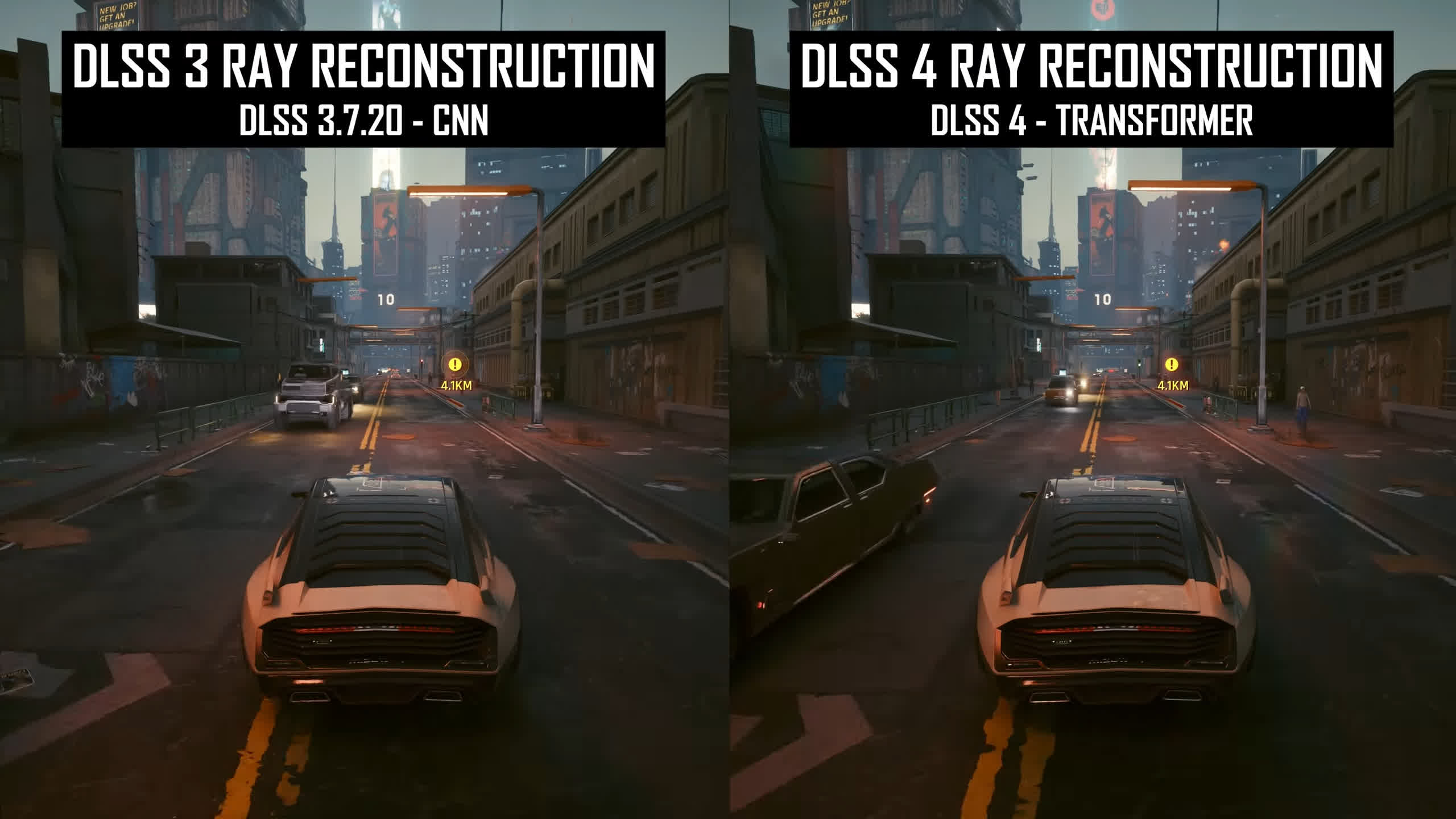Not sure many of some will buy into 8K - so this is a big sell for Nvidia
But really is it necessary? will Unity/Unreal make it moot except if want pure RTX
Ie if I showed you a flat scene and said imagine reflections, god rays etc, if you have quite good mental visual skills you could add them in, in your minds view
So really an AI engine could do this maybe for less cost I don't use Journey etc but surely give it a flat image , say where lights are, do ray tracing look- imagine could do OK
So for the specific game and application that I play, 8K interests me. That game is EvE. The scale of those battles blown up onto a large screen creates a sort of 3D effect that has to be experienced to be understood. That said, I sit very close to a 65" 4K120 TV that I use as a "monitor" in this application to get this "experience". At those distances, the DPI is VERY low. Frankly, modern hardware could probably play modern EvE at 8K120. There are 2 MAJOR issues stopping me from buying an 8K display for this purpose.
1) and BY FAR THE LARGEST, is that input lag on 8K is REALLY bad. The short of that is the more pixels, the more processing the driver in the display has to do to change each pixel. Going from 1080P to 4k on the same display will increase latency, but nothing that people will really notice. I HAVE NOT used a single 8k Display, TV or otherwise, that has acceptable levels of input lag
2)8K120 just isn't a thing right now. I will not throw down money for an 8K display if it is limited at 60hz. Whether it is because of the display or the GPU output, I will not be upgrading until 8k120 is a real thing. This is even more infuriating because the organization that controls the HDMI standard wont allow display ports on TV's and they also won't allow proper HDMI support for anything about 4k60 on Linux. There are work arounds for this and JANK is just something you have to accept if you want to become a Linux user. The thing is, the less jank you have to put up with, the better.
So even if I wasn't a stubborn linux user who plays too much EvE, I still thing that we are a VERY far off from 8k being relevant. I think the issues with modern hardware basically requiring upscaling to play modern games which is causing a regress in performance(and graphics) not progress, It's going to be awhile before 8k comes close to being relevant. I find something like the creation of a "stop gap" measure of a 6k standard (3240P?). 6k panels can also be made from cuts of defective 8K panels so it is theoretically a way to make more money per mm^2 than cutting a defective 8K panel into 3 4K panels.
But anyway. As someone who hopes to own a 100" ~8k panel for gaming some day, I feel we're still a good bit off from that. I had a best buy let me hook my laptop upto a Samsung QN800D that I almost bought, but the deal break was the input lag. In 4k, it was perfectly acceptable, you couldn't feel it. If you tried to game at 8K, it instantly was probably somewhere in the 100MS and you could definitely feel that. Even basically desktop use and veiwing files felt like my mouse cursor was moving through a heavy oil or something. It was a very odd experience. Again, 4k was fine, but 8k is completely off the table until inputlag gets address. Also, if I was to use this as a desktop monitor, I would expect 8k120. I'm not a high refresh elitest, I don't think I can really see or feel anything passed 120, but I can 100% feel the difference when web browsing or looking over excel spreed sheets on a 60hz vs or 120hz monitor. It's absolutely tolerable, but I'm not paying 8K TV money for a "tolerable" experience. My only requirement for spending exceptional amounts of money is an exceptional experience, which just isn't there right now. I'd rather replace tmy current display with a 4k OLED TV that accepts a 240hz input than go 8K60. And I actually think TVs can only accept a maximum of 4k165 right now for some arbitrary reason set by the HDMI foundation, but double check those numbers and the reason behind them because I'm not saying that with 100% certainty.
So, for now, I'll have to deal with sitting arms length away at my 65" 4k screen for my EvE gaming needs and being able to see individual pixels because the DPI is low. Part of me was considering a 4k120 projector for awhile because the way the light is, well, projected naturally creates a blending effect that is somehow both sharp and blurry at the same time(think CRT). But, the logistics of that whole idea are, well, absurd to put it politely.
